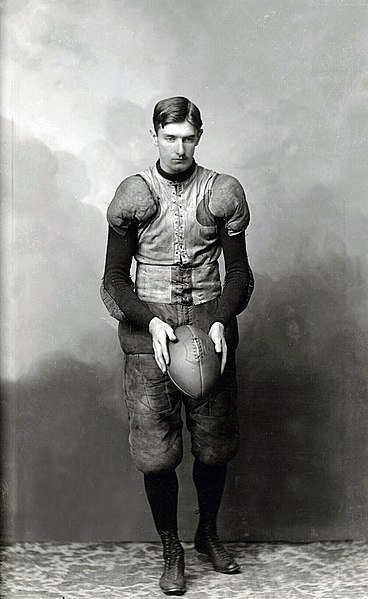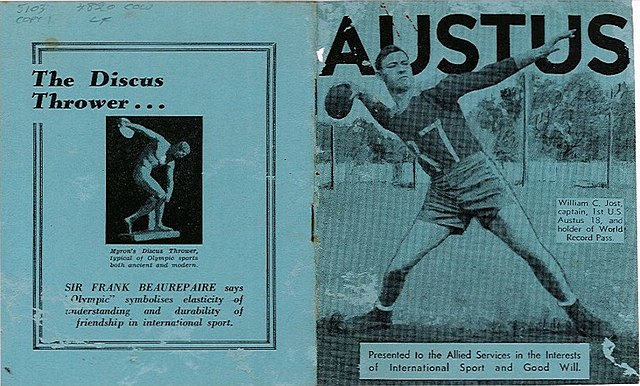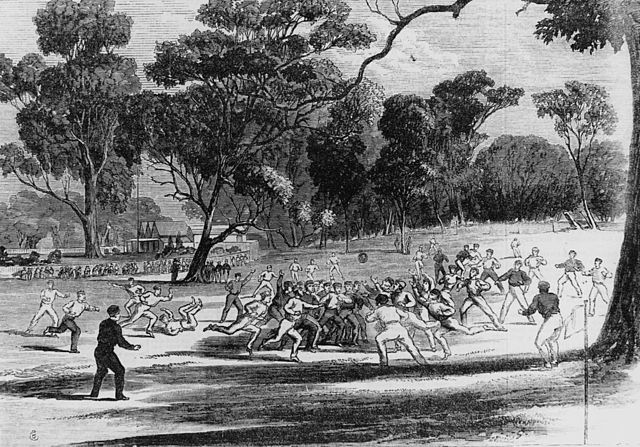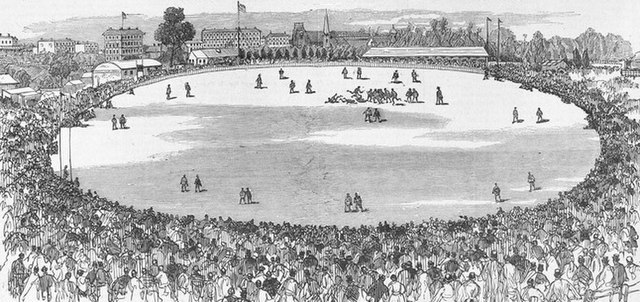Australian rules football in the United States
Australian rules football in the United States is a team and spectator sport which has grown rapidly since the late 1990s.
Australian-American footballer Pat O'Dea helped introduce Australian Rules into Californian schools in 1908
James Caveney was one of the pioneers of American fieldball as both junior player and coach before pursuing a Major League Baseball career in 1914
Sketch of Carji Greeves (1930) who attempted to reintroduce the game at Stanford University while coaching American Football at UCLA
Ern Cowley's Austus sport program in 1943 featuring American serviceman William Jost performing a Forward pass on an Australian Football oval.
Australian rules football
Australian rules football, also called Australian football or Aussie rules, or more simply football or footy, is a contact sport played between two teams of 18 players on an oval field, often a modified cricket ground. Points are scored by kicking the oval ball between the central goal posts, or between a central and outer post.
A ruckman leaps above his opponent to win the hit-out during a ball-up
Statue next to the Melbourne Cricket Ground on the approximate site of the 1858 football match between Melbourne Grammar and Scotch College. Tom Wills is depicted umpiring behind two young players contesting the ball. The plaque reads that Wills "did more than any other person – as a footballer and umpire, co-writer of the rules and promoter of the game – to develop Australian football during its first decade."
Engraving of a football match at the Richmond Paddock, 1866. The MCG and its first pavilion are visible in the background, as are kick-off posts, the forerunner of today's behind posts.
Engraving of the first intercolonial football match between Victoria and South Australia, East Melbourne Cricket Ground, 1879








